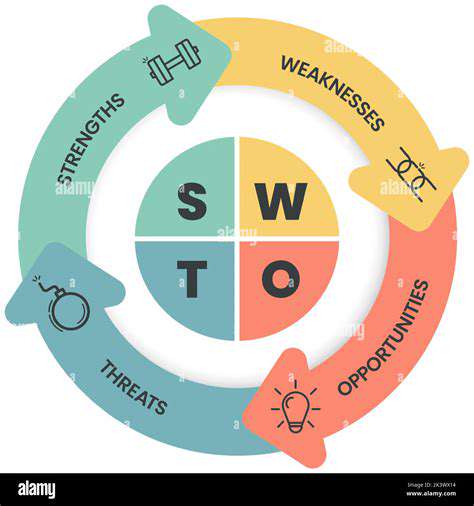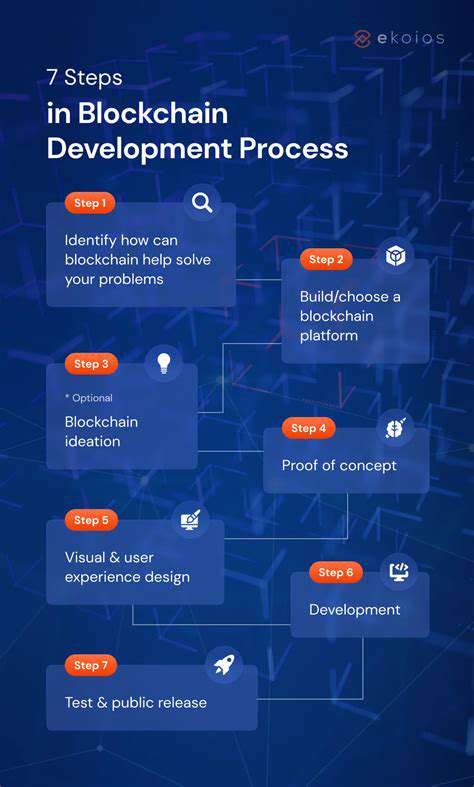Guide to Learning Ethical AI Development
Defining the Scope and Objectives
Data collection and preprocessing are crucial steps in any machine learning project, but they are particularly important when aiming for fairness and avoiding bias. The first step is to clearly define the scope of the project and the specific objectives. This involves understanding the target population, the variables to be collected, and the specific questions the model should answer. A well-defined scope helps prevent data collection biases from creeping in, ensuring that the data accurately reflects the intended population.
Careful consideration of the intended use of the data is essential. If the data will be used to make decisions about individuals, such as loan applications or criminal risk assessments, then the ethical implications of potential biases become even more pronounced. Defining clear objectives ensures that the data collection process is focused on achieving those objectives and not on collecting irrelevant or potentially biased data.
Identifying Potential Sources of Bias
Before collecting any data, it's vital to identify potential sources of bias. This involves considering all aspects of the data collection process, from the sampling method to the design of the data collection instruments. For instance, if the data is collected from a specific geographic area, it might not be representative of the broader population. Understanding the potential limitations of the data source is key to mitigating bias.
Careful consideration of historical data and existing societal biases is also crucial. If the data is being collected for a task with a history of discrimination, such as loan applications, the potential for reproducing existing biases must be acknowledged and addressed through preprocessing and model evaluation steps.
Data Collection Methods and Strategies
Choosing appropriate data collection methods is crucial for ensuring unbiased data. Random sampling techniques should be prioritized whenever possible to avoid selection bias. If random sampling is not feasible, alternative methods like stratified sampling might be necessary to ensure representation from different subgroups within the population. Clear protocols should be established for data collection, ensuring consistency and minimizing human error. This includes training data collectors and using standardized data entry forms where applicable.
Utilizing diverse and representative data sources is also a key aspect of avoiding bias. Gathering data from a variety of sources, including different demographics, geographic locations, and socioeconomic backgrounds, will help to ensure a more comprehensive and representative dataset.
Data Preprocessing Techniques
Data preprocessing is an essential step in preparing data for machine learning models. Techniques like data cleaning, handling missing values, and feature scaling can help to improve model performance and mitigate bias. Careful consideration must be given to the potential for introducing bias during these steps. For instance, inappropriate imputation methods for missing values can introduce bias if the missing data is related to a sensitive attribute.
Standardization and normalization techniques can help to reduce the influence of features with different scales, preventing features with larger values from disproportionately influencing the model. Outlier detection and handling is also important, as outliers can skew the model's predictions and introduce bias.
Evaluating Data for Fairness and Bias
After collecting and preprocessing the data, it's critical to evaluate the data for fairness and bias. This step involves using metrics to assess the representation of different groups in the dataset and to identify any potential disparities in model performance across these groups. Statistical methods can be used to quantify the level of bias in the data. For instance, comparing the distribution of sensitive attributes in the training and test sets is essential to ensure a fair model.
Analyzing the model's predictions on different subgroups is another crucial aspect of evaluating fairness. This helps in identifying potential discriminatory patterns. Techniques like disparate impact analysis can be used to measure the disparity in outcomes for different subgroups. Identifying and addressing these discrepancies in model performance is crucial to create a fair and unbiased model.
Monitoring and Auditing the Data Collection Process
Data collection and preprocessing are not one-time tasks; they should be an ongoing process. Continuous monitoring and auditing of the data collection process are essential to identify and address any emerging biases or errors. Regular reviews of the data should be conducted to detect any changes in the distribution of sensitive attributes over time. This proactive approach helps maintain data quality and fairness.
Establishing clear procedures for handling feedback and complaints about the data collection process is also important. This allows for a continuous improvement cycle, addressing issues as they arise and ensuring the model remains fair and unbiased over time.
Diet plays a crucial role in determining our overall health and well-being. A balanced diet that includes a variety of nutrients not only supports bodily functions but also helps in preventing chronic diseases such as obesity, diabetes, and cardiovascular conditions. Ensuring that we consume a mix of proteins, carbohydrates, fats, vitamins, and minerals is essential for maintaining energy levels and promoting optimal health.

Read more about Guide to Learning Ethical AI Development
Hot Recommendations
- How to Stay Productive While Working Remotely
- Tips for Managing Conflict with Coworkers
- Entrance & Certification Exams (升学考试)
- How to Improve Your Storytelling Skills (Speaking)
- How to Find Profitable Side Hustles
- Tips for Preparing for the TOEFL iBT Home Edition
- Guide to Switching Careers from [Industry A] to [Industry B]
- How to Run an Effective Hybrid Meeting
- Tips for Marketing Your Side Hustle on Instagram

![Best Prep Courses for the GMAT [2025]](/static/images/32/2025-05/BeyondtheClassroom3AAdditionalResourcesforGMATSuccess.jpg)









